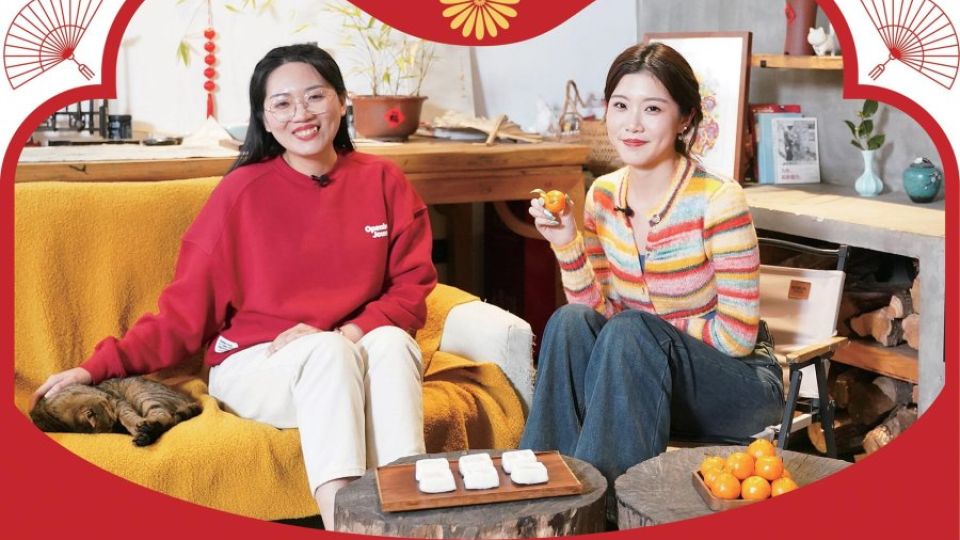February 13, 2024
HONG KONG – Celebrating the spirit of the upcoming Spring Festival, China Daily’s latest Strait Forward episode features two young women from the Chinese mainland and Taiwan. Chen Yizhen, 30, a Taiwan student at Beijing’s Tsinghua University, and Wang Linghan, 20, a student from Nanjing Normal University in Jiangsu province, met in the Shushan village in Suzhou, East China’s Jiangsu province, to discuss life and traditions on each side of the Taiwan Strait.
In the episode, which aired on Feb 5, the two also experienced various cultural traditions of Suzhou, including visiting a Taohuawu Woodcut New Year Prints workshop, searching for the “colors” of the new year.
One of the workshop’s artists demonstrated the intricate process of crafting prints by hand. For example, creating an image like the Chinese character fu, which means good fortune, involves seven wooden plates — one for the outline and six for different colors.
Mastering the outline plate demands precise skills. The artist meticulously carved each line with a knife, aiming to capture the agility and richness of a delicate brush painting.
The two guests then tried their hand at the craft, placing thin rice paper over inked wooden plates for printing.
Despite its seemingly simple nature, this process proved challenging — one slight mistake could tear the delicate paper. “It looked so easy when the artist did it, but it requires professional skills,” Wang said.
According to the artist, completing one piece takes seven to eight months. Due to the time and effort involved, handmade Chinese New Year woodcut prints gradually faded with the wider use of printing machines. However, they are making a comeback as people once again seek unique handmade artisanship.
“When people start to display Chinese New Year paintings on their doors, windows, and walls, it signals the arrival of the new year. But we’ve seen an increase in mass-produced prints. Although their colors are vibrant, they always seem to me to lack a certain soul,” Chen said. “In a world where everything is about speed and efficiency, it’s heartening to see artisans spending months carving wooden plates and painting layer by layer to accurately present the colors of the spiritual home of the Chinese people.”
Chen also shared her experience working with other cultural heritage projects during her internship last year at the Culture and Tourism Bureau in Zhangzhou, East China’s Fujian province. She discovered many connections between the Chinese mainland and Taiwan’s cultural heritage projects. For example, Taiwan’s glove puppetry is very similar to Fujian’s puppetry.
“Many of Taiwan’s intangible cultural heritage projects were originally passed down from Fujian and then evolved over time. This made me feel that the Chinese mainland and Taiwan share the same roots and culture,” Chen said.
When she shared videos of herself crafting intangible cultural heritage artworks with her friends in Taiwan, they were all very curious and said they wanted to visit the Chinese mainland.
After leaving the workshop, Chen and Wang went on to taste the delicious Suzhou-style pastries.
“As a Suzhou local, the thing I miss the most during Spring Festival is taking a bite of the chewy and sweet square rice cakes,” Wang said.
Suzhou, known for its rich agricultural culture, combines rice with seasonal ingredients to craft exquisite pastries for each season, such as rose cakes in spring, mint cakes in summer, and date, pine nut, and walnut cakes in autumn and winter. Eating sticky rice square cakes during Spring Festival is a way of celebrating family reunions and wishing for prosperity.
“It’s not just the rice cakes. Food is crucial for Chinese people, especially during the Lunar New Year’s Eve dinner, which is the most important meal of the year. People place their expectations for the new year in these delicious dishes,” Wang explained.
Chen said people in Taiwan have tangyuan, or glutinous rice balls, with peanut or sesame filling, just like people on the Chinese mainland. And Wang introduced the unique salty glutinous rice balls from Suzhou, often filled with meat, shepherd’s purse, or shredded radish, offering a fresh and appetizing taste.
“Whether we are from the Chinese mainland or Taiwan, we all, as Chinese people, have a strong emotional attachment to our families. No matter how far we are from home, we must come back for the family reunion when Spring Festival arrives,” Chen said. “I hope everyone who has to spend time away from their families can return home soon and have a happy Spring Festival.”


